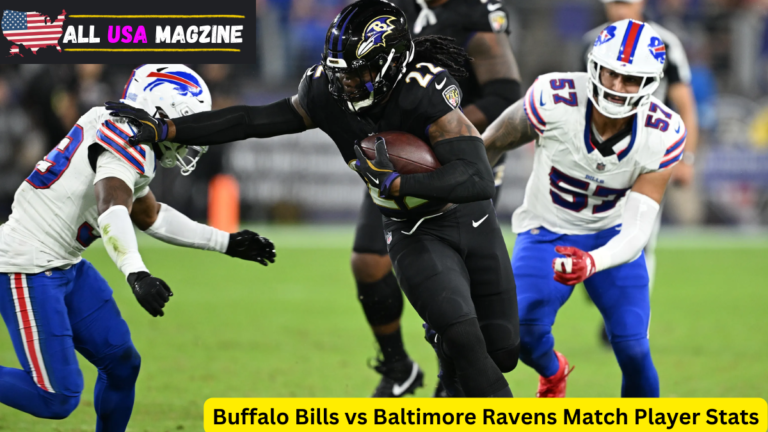The Philadelphia Eagles and Washington Commanders are two teams that have had a rich and storied history in the NFL. Their matchups, which are often characterized by intense competition and passionate fan bases, have become key moments in the NFL season. The game between these two teams brings a lot of excitement to fans, and the player stats from these games are often scrutinized as key metrics to evaluate the performance of each side. In this article, we’ll dive into the player statistics from a recent matchup between the Philadelphia Eagles and the Washington Commanders, highlighting the key performances from each team and how the players contributed to the outcome.
The Philadelphia Eagles, known for their dynamic offense and stout defense, have consistently been one of the top teams in the Philadelphia Eagles vs Washington Commanders Match Player Stats, especially in recent years. Led by quarterback Jalen Hurts, the Eagles have established themselves as a force to be reckoned with. On the other hand, the Washington Commanders, under new leadership, have seen a blend of strong defensive play mixed with offensive inconsistencies. When these two teams face off, the stakes are high, and every player’s individual performance can make a significant impact on the game’s outcome.
Jalen Hurts: The Catalyst for the Eagles’ Offense
Jalen Hurts has quickly become one of the premier quarterbacks in the NFL, and his performance against the Washington Commanders was no exception. Hurts showcased his dual-threat ability, both with his arm and his legs. He passed for over 200 yards, completing a high percentage of his throws, which helped the Eagles sustain drives and keep the Commanders’ defense on its toes. What stood out was Hurts’ ability to read the defense and make quick decisions, whether he was scrambling to extend plays or hitting his targets down the field.
Hurts’ running ability also played a pivotal role in the Eagles’ offensive strategy. His rushing stats were impressive, as he picked up several key first downs with his legs, keeping the Commanders’ defense on the backfoot. His performance demonstrated why he’s one of the most versatile quarterbacks in the league, able to adapt to any situation and make plays when his team needs it most.
A.J. Brown: The Eagles’ Top Target
When looking at the Eagles’ receiving corps, A.J. Brown’s name stands out. Against the Commanders, Brown had a dominant performance, showing why he is one of the top wide receivers in the NFL. His ability to make contested catches and his yards after the catch made him a difficult player to contain. Brown finished the game with impressive receiving yards and multiple key receptions, including a touchdown that highlighted his physicality and playmaking ability.
Brown’s chemistry with Hurts was evident throughout the game, with the two connecting on several deep passes and critical third-down conversions. His performance against Washington was a testament to his skill, as he consistently made big plays that kept the Eagles offense moving and created mismatches for the Commanders’ defense to deal with.
The Eagles’ Offensive Line: Dominating the Line of Scrimmage
While Hurts and Brown were the most prominent offensive players, much of the Eagles’ success against the Commanders came from their offensive line. The Eagles’ offensive line is considered one of the best in the league, and their dominance in the trenches was on full display. The line provided excellent protection for Hurts, giving him time to make his throws while also opening up holes in the running game.
Running back Miles Sanders benefited from the strong play of the offensive line, gaining significant yardage and helping the Eagles maintain a balanced attack. The offensive line’s ability to control the line of scrimmage was key in limiting the Commanders’ defense’s impact on the game.
Washington Commanders’ Defense: Staying Resilient
The Washington Commanders, while struggling with consistency on offense, have consistently been known for their defensive prowess. Against the Eagles, the Commanders’ defense was tasked with slowing down a potent offense, and they showed moments of brilliance. Defensive end Montez Sweat was one of the standout performers, recording several pressures on Hurts and providing consistent pressure on the quarterback. Sweat’s ability to disrupt the Eagles’ offense helped prevent them from fully establishing a rhythm in the passing game.
Additionally, linebacker Jamin Davis played a key role in the Commanders’ defensive schemes. Davis’ ability to cover the middle of the field and break up passes in critical situations helped the Commanders remain competitive in a game where the Eagles’ offense was clicking on all cylinders. Although Washington struggled to completely stop the Eagles, their defense’s resilience helped keep the game close for a significant portion of the match.
Sam Howell: The Commanders’ Quarterback Play
On the offensive side of the ball, the Washington Commanders’ quarterback play was a topic of interest. Sam Howell, the Commanders’ young quarterback, had a tough challenge facing a strong Eagles defense. Howell showed flashes of potential but struggled to make consistent plays under pressure. While he was able to move the ball at times, particularly with some intermediate throws and a few deep passes to wide receivers like Terry McLaurin, his inability to capitalize on key opportunities hurt the Commanders’ chances.
Howell finished with modest numbers, and his inability to generate sustained offense ultimately proved to be a downfall for Washington. A few crucial turnovers and missed throws left the Commanders in a tough spot, forcing them to play catch-up for much of the game.
Terry McLaurin: The Bright Spot in Washington’s Offense
Despite the struggles at quarterback, wide receiver Terry McLaurin continued to shine as the go-to weapon for the Washington Commanders. McLaurin finished the game with solid receiving yards and made some impressive catches, including a long reception that helped Washington gain some momentum. McLaurin’s speed and route-running ability were on full display, and he remains one of the most reliable targets in Washington’s offense.
Though McLaurin’s individual performance was notable, the lack of consistency at the quarterback position limited his overall impact on the game. Still, McLaurin’s ability to get open and make plays kept the Commanders in the game, even if they ultimately fell short.
Defensive Standouts for the Eagles
While the Eagles’ offense garnered much of the attention, their defense also played a key role in the team’s victory. The Eagles’ defensive front, led by players like Fletcher Cox and Haason Reddick, generated pressure on Howell throughout the game. The defensive line’s ability to collapse the pocket and create havoc was a major factor in limiting Washington’s offensive production.
In addition to the defensive line, the Eagles’ secondary, led by cornerbacks Darius Slay and James Bradberry, provided solid coverage on Washington’s wide receivers. Slay, in particular, was often matched up with McLaurin, and his experience and ability to read the quarterback helped stymie the Commanders’ passing game. The Philadelphia Eagles vs Washington Commanders Match Player Stats defense showcased its depth and versatility, creating turnovers and making key stops when needed.
Conclusion
The matchup between the Philadelphia Eagles and Washington Commanders was a tale of contrasting strengths and weaknesses. The Eagles, led by Jalen Hurts and A.J. Brown, had a potent offensive attack that kept Washington on its heels for much of the game. Despite a strong defensive effort from Washington, the Commanders struggled to find consistent offensive production, particularly with Sam Howell at quarterback. Ultimately, the Eagles’ ability to control the game with both their offense and defense led them to a solid victory.













